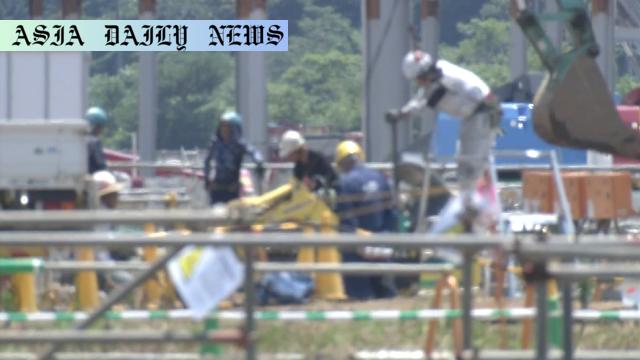Heatstroke is a growing concern in Japan, requiring companies to take preventive measures and assist workers with advanced support systems.
Japanese companies are now required to protect workers from heatstroke risks as temperatures climb higher in summer.
Measures include offering cooling equipment, worker training, and health monitoring systems focused on early detection.
The number of workplace heatstroke casualties in 2024 is at a record high, prompting government-backed solutions.
Experts stress government support for small businesses to implement heatstroke prevention measures.

Introduction to Heatstroke Challenges in Japan
As Japan experiences increasingly hotter summers, heatstroke has emerged as a serious and growing concern. Temperatures can frequently rise to dangerous levels, making it imperative for employers to adopt preventive measures. Starting this year, Japanese companies are legally required to safeguard their workers from the perils of heat exposure, including educating employees about heatstroke and ensuring readiness for emergencies.
The construction industry, in particular, is one of the high-risk sectors for heat-related illnesses. Companies have started taking steps to protect their workers by providing essential cooling tools, such as air conditioners and cold water supplies, at job sites. These practical solutions not only promote worker health but also help maintain productivity during extreme summer conditions.
Innovative Measures: From Tech to Health Monitoring
To strengthen preventive measures, an IT company in Tokyo has developed a novel system that uses body-weight measurements as an early detection method for heatstroke. Workers weigh themselves multiple times a day and answer questions about their well-being. The data is then analyzed to assess the likelihood of heatstroke, enabling timely interventions.
The Japanese health ministry emphasizes that losing more than 1.5% of body weight through sweating is a significant risk factor. These innovations represent a positive shift toward integrating health monitoring technology into workplace practices, thereby leveraging data-driven solutions to combat heat-related risks.
Economic and Workplace Implications
The 2024 statistics on workplace heatstroke in Japan are alarming, with 1,257 reported cases, including 31 fatalities. This rising trend highlights an urgent need for comprehensive changes in workplace policies and infrastructure. While large corporations are well-equipped to implement preventive measures, small businesses often lack the financial resources to follow suit.
Kitaoka Daisuke, an associate professor at Toyo University, has advocated for government support to ensure equitable heatstroke prevention across businesses. Subsidies and grants could provide smaller firms with the financial capacity to purchase necessary equipment and create safer work environments. Such interventions are critical for extending heatstroke prevention measures to all economic sectors, leaving no worker unprotected.
Expert Perspectives and the Path Forward
Experts argue that a coordinated approach between the government and private industries is essential to tackle the heatstroke crisis effectively. Introducing subsidies, raising awareness, and enforcing regulations can go a long way in reducing heat-related workplace dangers. Public outreach campaigns could also educate employees and employers about the importance of hydration, rest breaks, and heat management tactics.
Ultimately, comprehensive solutions addressing both immediate and long-term challenges are vital in mitigating the effects of Japan’s increasingly extreme summers. By focusing on technological innovation, public-private partnerships, and financial support for small businesses, Japan can create a model framework for workplace heatstroke prevention.
Commentary
The Growing Heatstroke Crisis Demands Urgent Action
Japan’s rising summer temperatures are a stark reminder of how climate change can directly affect our everyday lives and working conditions. The introduction of mandatory heatstroke prevention measures signifies an important step in safeguarding worker health, especially for those employed in high-risk industries like construction. However, the alarming statistics from 2024—over 1,200 cases and 31 fatalities—underscore the need for more comprehensive and scalable solutions.
Innovative Health Monitoring: A Game Changer?
The development of health-monitoring systems that track body weight and analyze heatstroke risks showcases the potential of technology in workplace health. By catching early warning signs and prompting timely interventions, these tools can save lives and prevent long-term health complications. It is encouraging to see such innovative approaches gaining traction in Japan, but widespread implementation requires sustained effort and financial backing.
Addressing Disparities Between Large and Small Businesses
The challenges faced by small businesses in adopting heatstroke prevention measures are concerning. Without financial support, these companies may struggle to invest in critical resources like cooling equipment or health-tracking systems. Government subsidies, as proposed by experts like Kitaoka Daisuke, could bridge this gap, ensuring that all workers receive adequate protection regardless of their employer’s size.
Ultimately, tackling the heatstroke crisis in Japan requires a multi-pronged approach involving regulation, innovation, and financial assistance. By fostering collaboration between the government, private sectors, and academic institutions, Japan can lead the way in creating safer, more resilient workplaces for its citizens. The path forward is challenging, but with the right strategies, progress is attainable.


